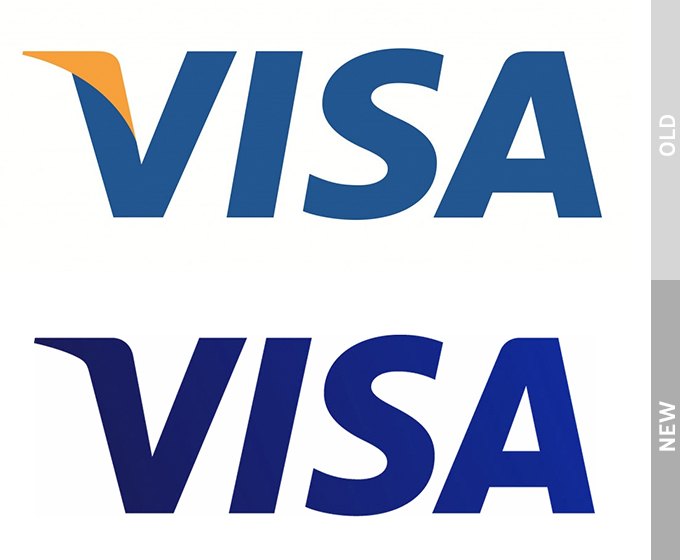Visa Redesigned Its Iconic Logo For The Digital Age
In the world of design, there are a few unwritten rules. For a logo, a few of those rules are don’t make it over the top, don’t make it overly and unnecessarily colorful, and make it match the brand.
One thing that we haven’t considered (at least some of us) is taking that list of rules and sending them to the opposite side of the spectrum. Is there such a thing as a logo that is so boring that it goes against those unwritten laws?
Let’s look at what Visa has done with their newest logo and talk about it.
The old Visa logo

This of course, is the old Visa logo. There’s nothing special about it. In fact, if it didn’t say Visa, you could easily mistake it for -insert any generic massive corporation here-. But what it does represent is the brand. It’s a calming dark blue, and it boasts a small golden-yellow accent atop the V that really draws your focus to the start of the logo.
Pretty simple, right? It’s not the Mona Lisa, but it certainly has some aspect of design. Not even that much can be said about the new logo.
The new logo

Yep. That’s it. Believe it or not, there are some changes at play here. But, as we were discussing before, they are so far from being unique that they might put you to sleep.
For starters, they completely dropped the golden-yellow highlight. In a sense, it does unify the logo a little bit better, so maybe that wasn’t the worst choice.
The next thing you’ll notice is the color change. Visa went from a kind of playful blue to a dark, more serious blue, and added in a slight color gradient.
The reason, according to Visa, that they dropped the original color scheme actually dates back to the creation of credit cards. Way back in 1958, Bank of America sent out what they referred to as Bank of Americards.
Back then, Bank of America was based in California. The colors of those cards back then (again, the first ever credit card) was gold and blue. The blue represented the clear california sky, and the gold was taken from the color of the rolling golden hills. These colors represented the luxury of having a credit card simply because they represented the first credit cards created.
Now, what does that have to do with anything? Visa decided to cut these colors out because they wanted the logo to represent everyone and everywhere. In fact, there tagline is “Everywhere you want to be.”

So, it makes sense that they’d want to cut colors that represent a single state. But, they certainly did not have to be so boring about it.
And that’s pretty much all they changed. All we’re left with is a bland and easily ignorable sans serif. It’s quite boring and unnecessary. Most of the time, brands change their logo to signify change. This logo is far from changed. It is un-unique in every sense of the word, and lacks everything that makes a company stand out.
What to take away from this
Listen, I get that nobody should really expect much design-wise from a company that provides financial services. What I am saying is that they could have tried much harder.
When most people open up their wallet or purse, this logo is one of the first things that greet them. Every single time you pay for something, you and everyone around you will see this logo. Granted, it is quite small in this case, and in reality nobody will see it, but still.
You would expect a massive corporation to at least put a little more thought into the words that define their existence.
As of right now, Visa seems pretty happy about their new change. On the other hand, it’s left many designers world-wide questioning their use of blue completely. Only time will tell if Visa keeps the change, or continues to charge full-steam ahead confidently.
Read More at Visa Redesigned Its Iconic Logo For The Digital Age
